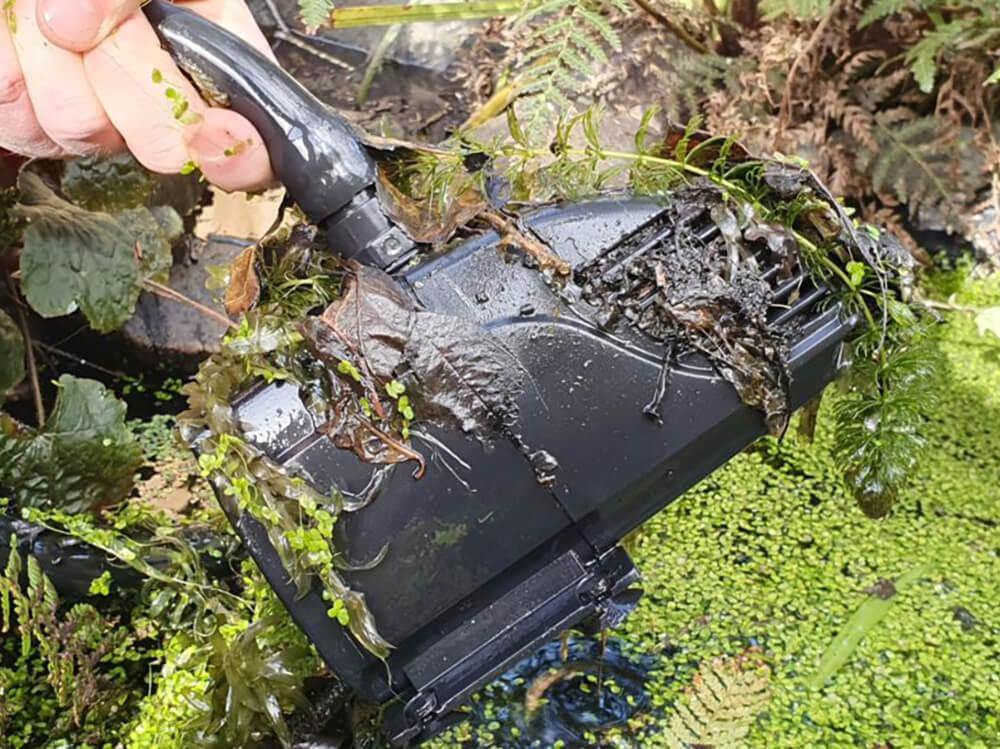How to clean a pond pump
Pond pumps and pond filters need regular cleaning and maintenance because of the dirty job they have to do.
Even new pond pumps can clog up and stop and working if they suck in too much algae and debris. If your pump stops working the first thing to do is access, check and clean the impeller. Here's how:
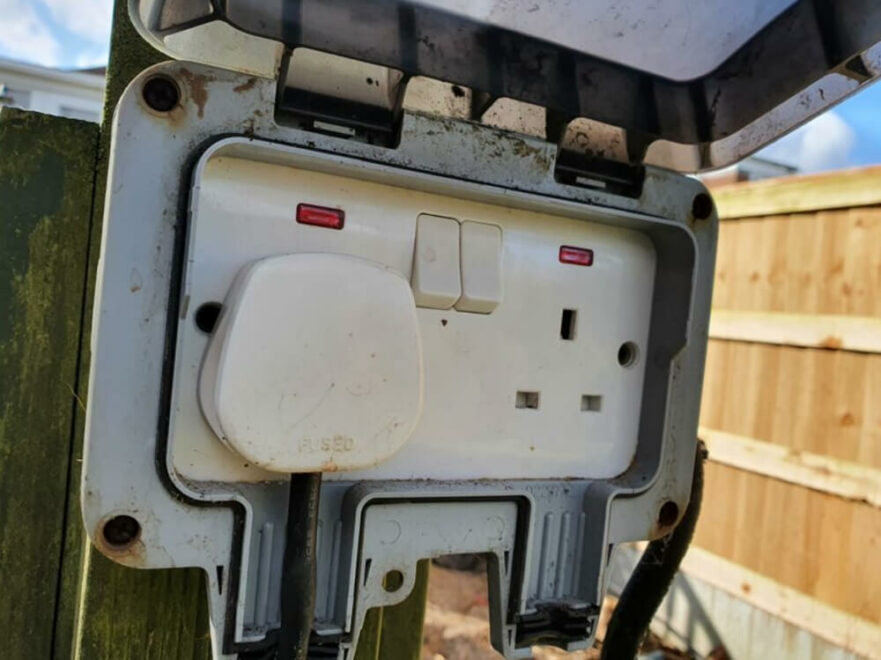
1. Switch off the pond pump
Switch off the pump at the mains and to be extra safe and sure, unplug it. If the pump was powering a UV clarifier turn that off too.
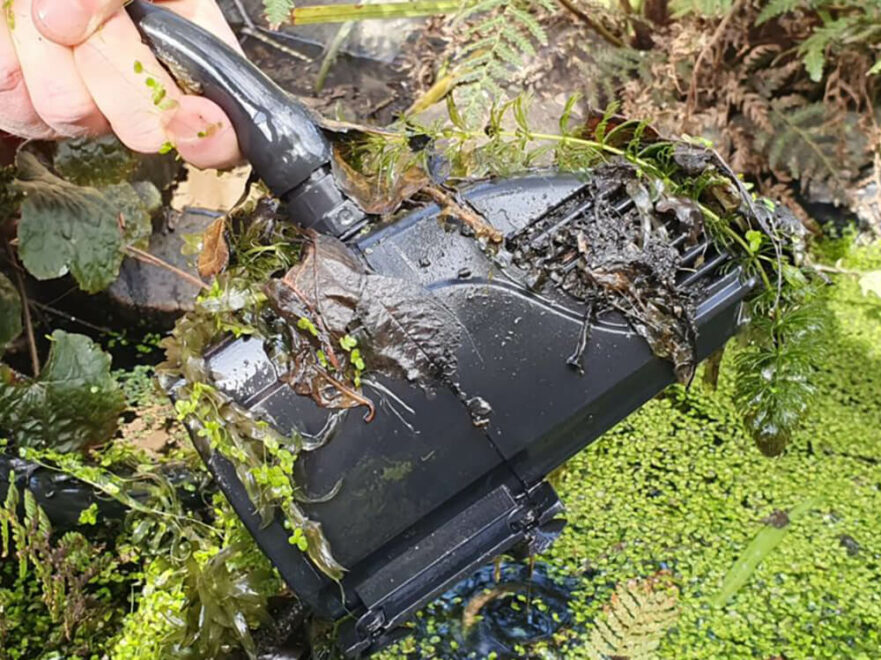
2. Take the pond pump out
Remove the pump from the pond by the hose, not the cable. For large ponds attach a cord to the pump to help retrieve it from the middle in the future.
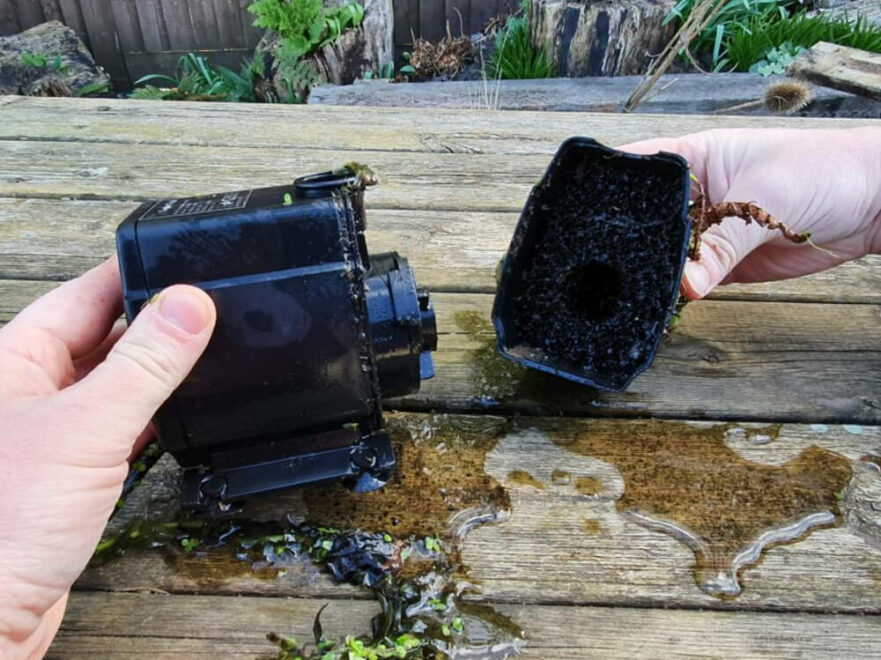
3. Remove the pond pump cage
Unclip or unscrew the cage. If there is a sponge or other filter media inside, remove that too. Some pump cages require a screwdriver.
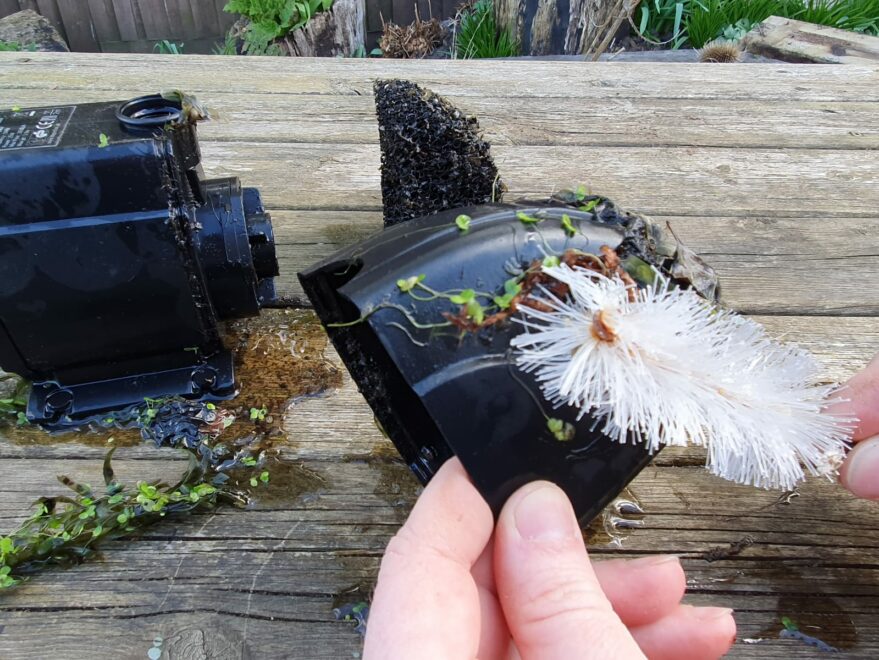
4. Scrub the pond pump cage
Use a brush to scrape off all the dirt, debris and any pond plants or algae that have stuck in the slots in the cage. Plunge the cage in water, use a hose or jet washer to get it looking like new.
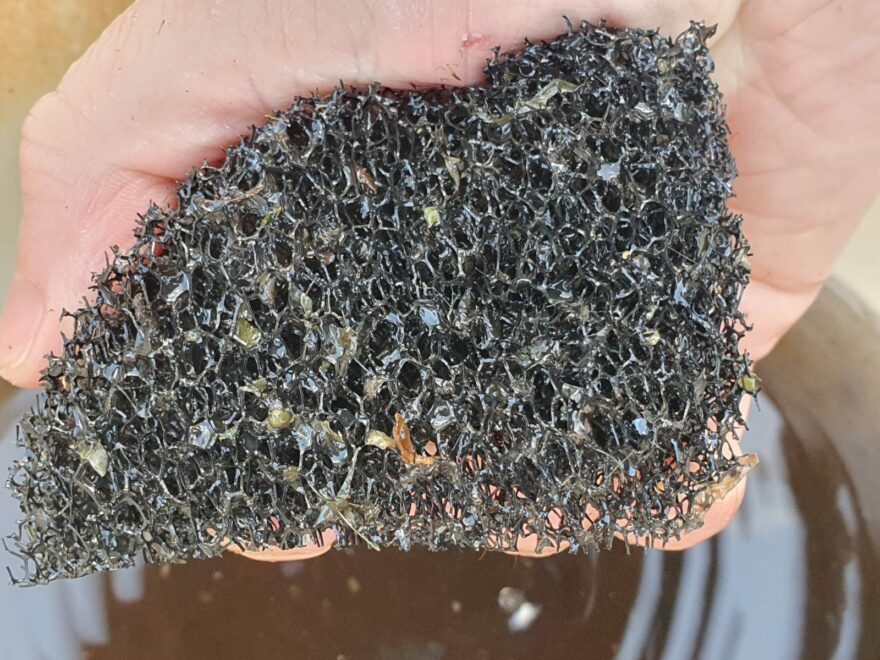
5. Clean the prefilter sponge
If there is one, clean the dirty pre-filter sponge in a bucket of pond water to remove all the muck. If it doesn't spring back or has disintegrated it's time for a new sponge.
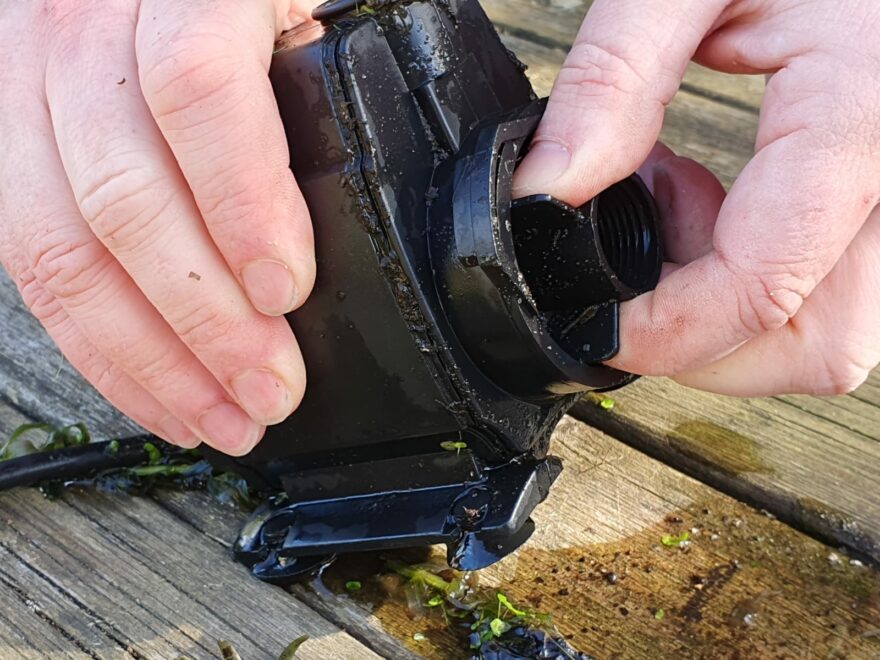
6. Open the pond pump impeller cover
Unscrew the impeller cover to access the impeller underneath. You may need a screwdriver, depending on the model, but some (like this pump,) unscrew anticlockwise by hand.
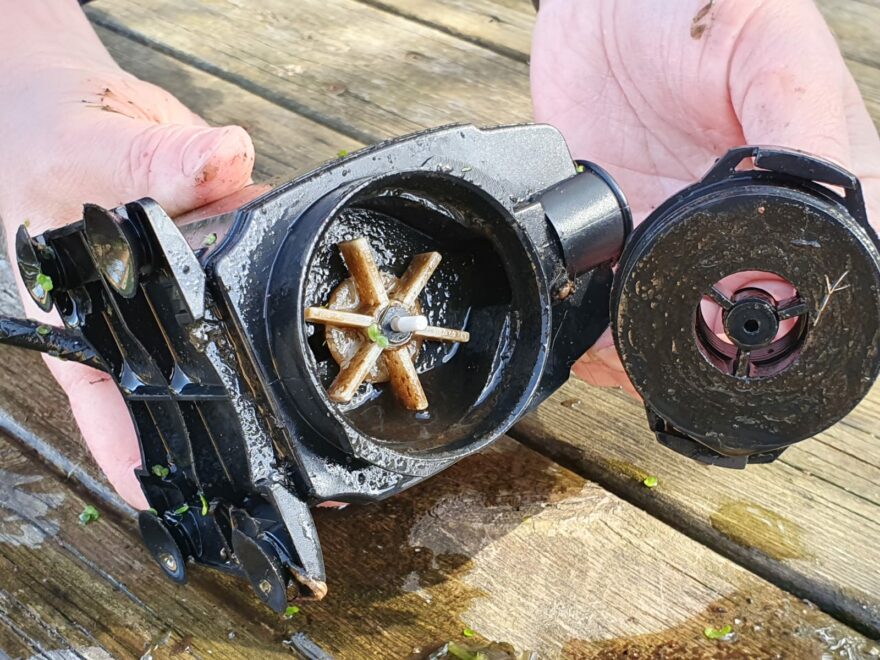
7. Access the pump impeller chamber
The impeller is the only moving part in the pump and it's what pumps the water when it spins around inside the chamber. When impellers get dirty the pump can stop working, so check and clean it regularly.
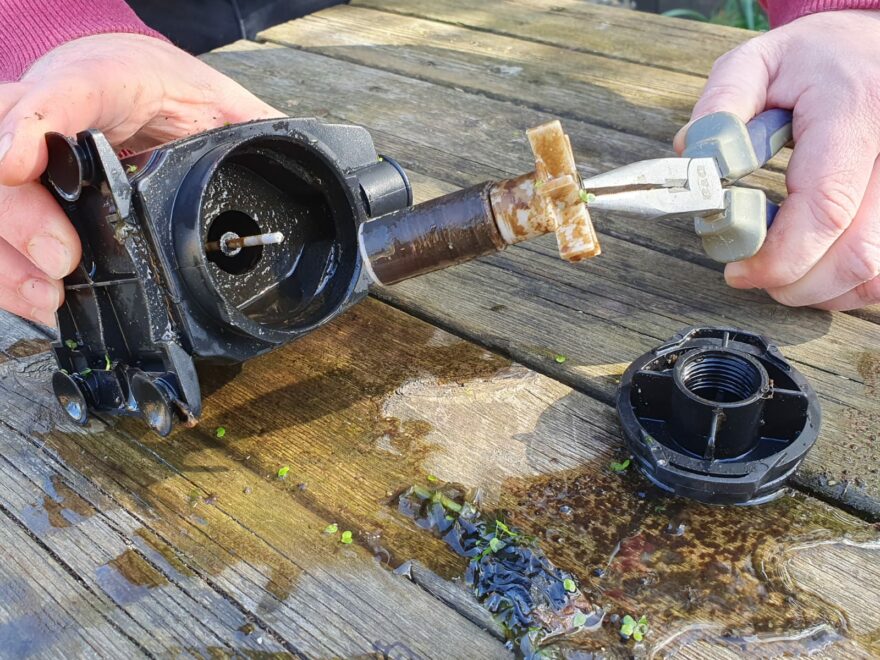
8. Remove the pond pump impeller
The impeller is held in by a magnet. Carefully pull the cross-shaped impeller and attached cylindrical magnet from the impeller chamber inside the pump.
Careful! The thin white impeller shaft is delicate and could snap.
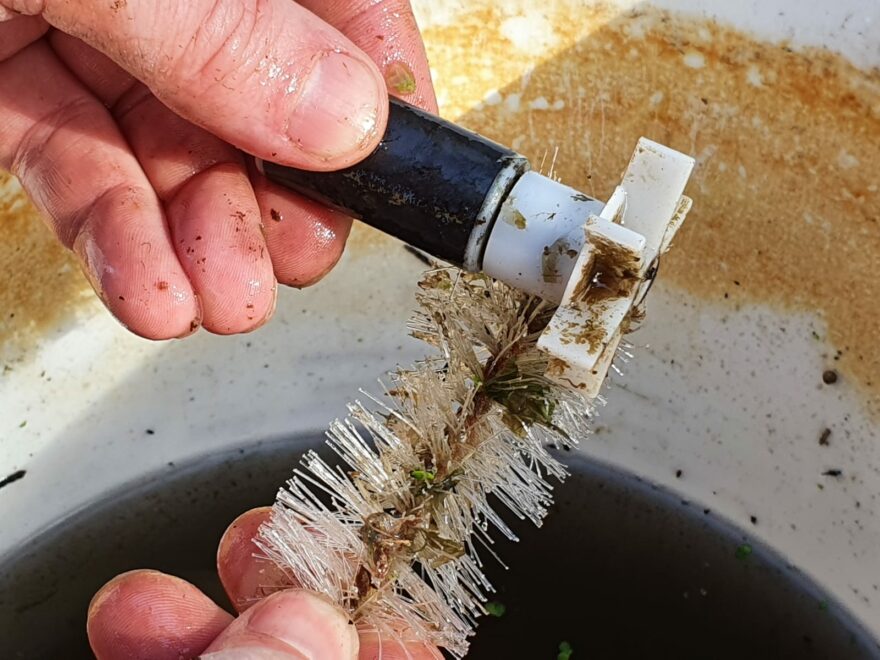
9. Clean the pump impeller
Use a small brush to scrub and clean the impeller. Rinse in water until it looks like new. Check the impeller for signs of wear and tear, cracks and damaged blades. Replace the impeller if necessary.
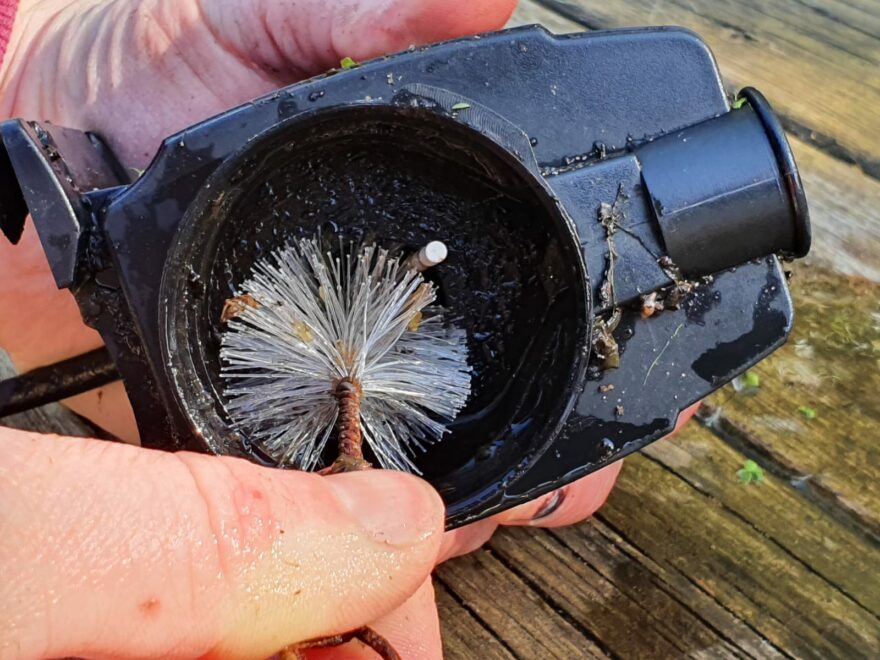
10. Clean the pump impeller chamber
The chamber and impeller shaft also get dirty so use a small brush to get right inside the chamber, remove any grit, snail shells and dirt, and get it clean and free of debris again.
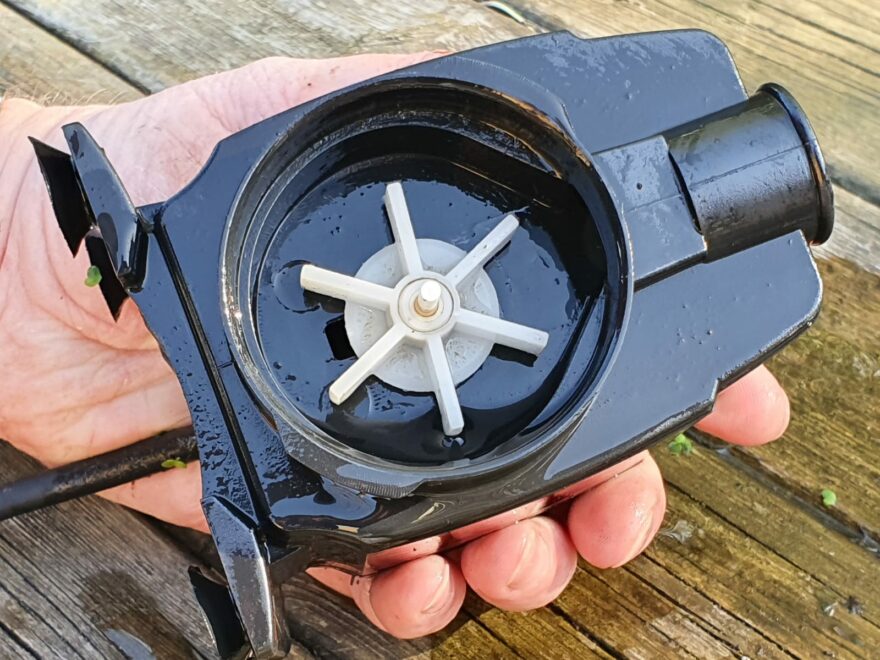
11. Replace the pond pump impeller
Replace the impeller by hand, carefully sliding it back in over the impeller shaft. Magnetism will pop the last bit of the impeller in for you.
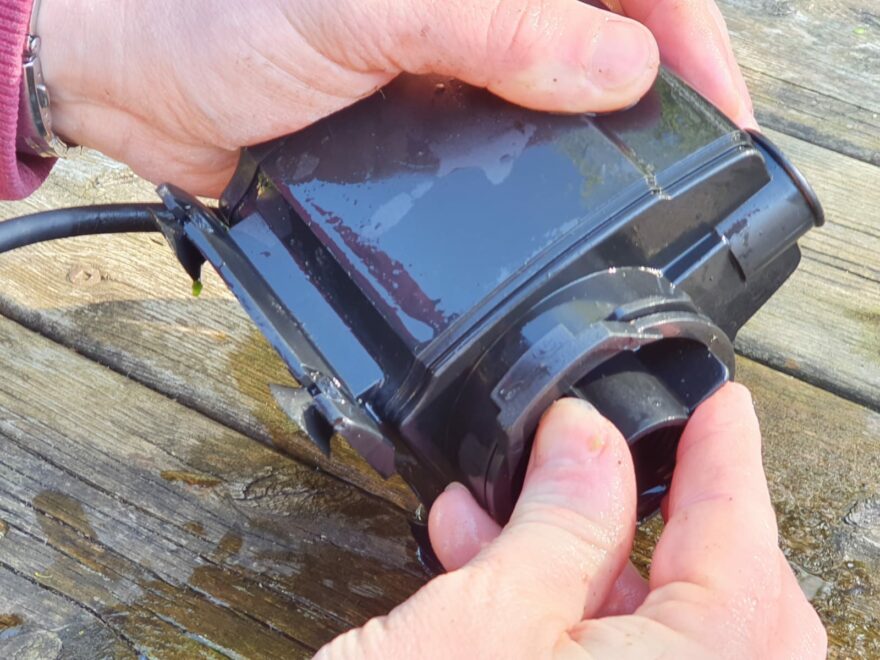
12. Re-fit the impeller cover
Don't forget to replace the impeller cover when putting the water pump back together. It helps to keep the impeller in place and spinning correctly on its central axis.
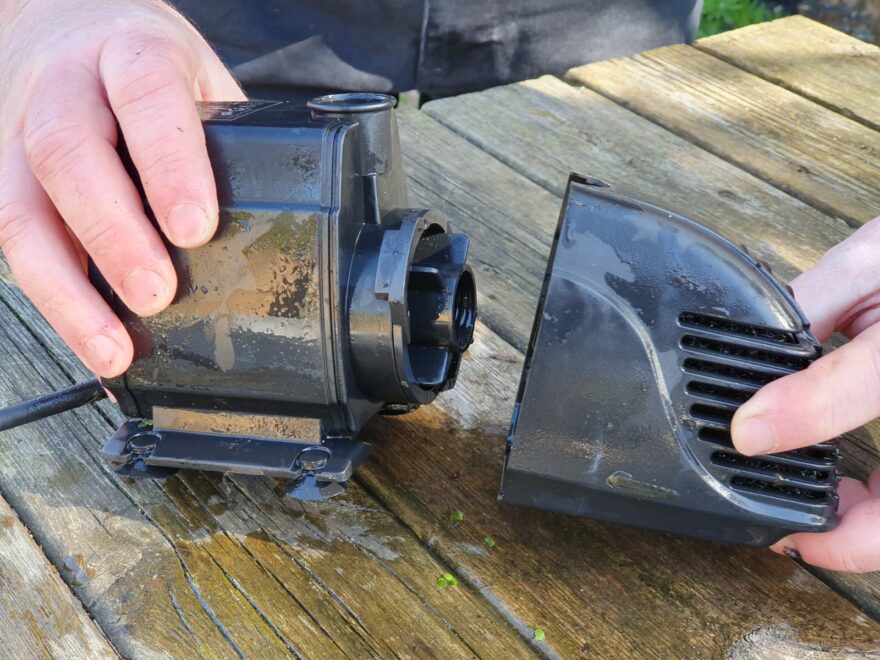
13. Fit the pump cage
Replace the clean cage and pre-filter sponge if there is one. Some pump cages click or clip into place by hand while other use screws to secure them into place.
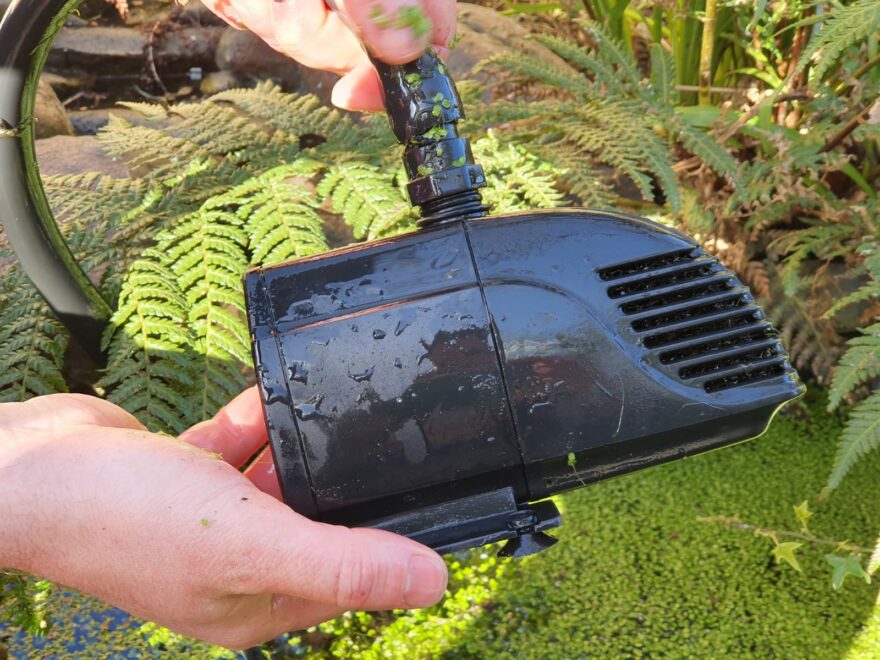
14. Put pump back in the pond
Your cleaned pump should now be good as new. Place back in the pond, or water garden, give it a gentle shake to remove any air bubbles, plug it back in and switch it back on.




